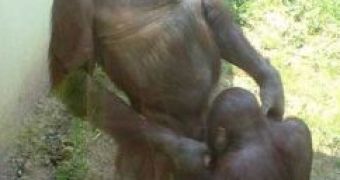When we say homosexuality is against nature, this is the biggest nonsense.
If we peek on nature, we'll see animal gays arising from any corner...
Homosexuality as an unnatural phenomenon can now be rejected scientifically.
From male killer whales that ride the dorsal fin of another male to female bonobos (dwarf chimpanzee) that rub their genitals together, the animal kingdom tolerates all kinds of lifestyles.
With more than 1,500 species displaying homosexuality, you can really have a chance to visualize the phenomenon!
And it has been confirmed from invertebrates (like crayfish and beetles) till the anthropoid (man like) apes.
The idea, however, is rarely discussed in the scientific community and is often dismissed as unnatural because it doesn't appear to benefit the larger cause of species continuation.
"I think to some extent people don't think it's important because we went through all this time period in sociobiology where everything had to be tied to reproduction and reproductive success," said Linda Wolfe, who heads the Department of Anthropology at East Carolina University.
"If it doesn't have [something to do] with reproduction it's not important."
However, species continuation may not always be the ultimate goal, as many animals, including humans, engage in sexual activities more than it's necessary for reproduction.
And as has been observed for tens of years that animals take drugs (see article bellow) and look for pleasure, why sex for pure pleasure would be so unnatural?
"You can make up all kinds of stories: Oh it's for dominance, it's for this, it's for that, but when it comes down to the bottom I think it's just for sexual pleasure," Wolfe told.
Conversely, some argue that homosexual sex could have a bigger natural cause than just pure ecstasy: namely evolutionary benefits.
Copulation could be used for alliance and protection among animals of the same sex.
In situations when a species is mostly bisexual, homosexual relationships permit an easier way to join a pack.
"In bonobos for instance, strict heterosexual individuals would not be able to make friends in the flock and thus never be able to breed," said Petter Bockman from University of Oslo.
"In some bird species that bond for life, homosexual pairs raise young. If they are females, a male may fertilize their eggs. If they are males, a solitary female may mate with them and deposit her eggs in their nest."
In Australian black swan, almost 25 % of the families are homosexual couples. Male couples sometimes mate with a female just to get an offspring.
Once she lays the egg, they chase her away, hatch the egg, and raise a family on their own.
"Homosexuality" and "heterosexuality" are artificial terms defined by human society.
"Many species are hermaphrodites," Bockman said.
Hermaphrodites have both male and female sex organs and hermaphrodites can be encountered even among fishes.
A lot of marine species have no sex life at all, but just squirt their eggs or semen into sea.
Some creatures even reproduce asexually, by dividing themselves into two organisms.
In many species of lizards, females clone themselves.
Animal homosexuality, like human homosexuality, is challenging and poorly understood and scientific world still looks with shame upon the subject.
Many researchers don't even want to be linked with this type of investigation.
"I've had primatologists offer to give me their data on homosexual behavior because they didn't want to publish it," Wolfe said.

 14 DAY TRIAL //
14 DAY TRIAL //